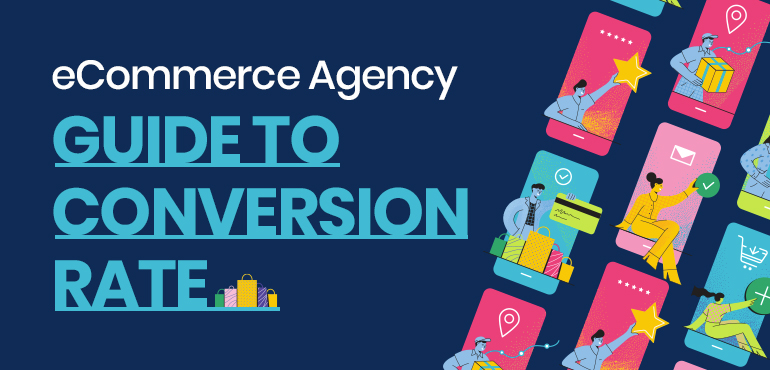The growing power of the online shopper

Article topics
- Evolution
- Consumer journeys
- Disorderly behaviour
- The power of social proof
- Personalisation 2.0
- Creating value
- Personalised spaces
- Individuality
- Final thought

Evolution
In recent years the evolution of digital technology and innovation has seen a shift in power from brand to consumer. Consumers now have the choice of when, where and how they engage with brands. Empowered by their mobile devices and social media, consumers are demanding more unified and personalised shopping experiences. And they are more than willing to share their opinions about those experiences with others. Consumers have a voice and they expect it to be heard.
Consumer power is growing with ever greater choice of products and brands, and the shifting digital landscape is giving consumers the influence to drive their relationships with brands, but this has also increased the complexity of decision making. Consumers have found ways of managing the tyranny of choice and many now use tools such as social media, price comparison websites and online reviews to inform their decisions and exert their power.
One of the results of this shift in the consumer/brand power relationship is the destabilisation of consumer journeys.

Consumer journeys
The route that the consumer takes to becoming a customer would ideally be a straight line— consumer sees product; they buy product; they use and enjoy the product; and then they repeat in perpetuity. In the real-world consumer journeys have always been more complicated than that, but have generally followed a linear path. In recent years those journeys have become more complex. Instead of being seen as a linear funnel, the consumer journey came to be seen as a loop.
The buying decision process was considered to be (and to some extent can still be seen as) more of a continuous, cyclical journey with five key phases: brand awareness, consideration, purchase, advocacy and loyalty, with loyalty looping back to the purchase phase. However, consumer journeys are different for individual consumers and while the loop model explains the journey in its broadest sense, there are many touchpoints a that must be considered, interrupting, diverting and delaying the journey to purchase.

Disorderly behaviour
With instant access to vast amounts of information in just a few clicks, consumers are exposed to many more brands, products and choices at the consideration phase of their journey than pre-eCommerce. This makes it increasingly difficult for brands to make an impact on consumers at the initial stage of their buying journey. For example, the decision to buy a car now often involves lengthy research across myriad touchpoints, each one contributing to the final purchase decision.
One study tracked the purchase journey of a consumer who wanted to buy a new car. It revealed the research done by the consumer included over 900 digital interactions across channels, including review websites, Google and YouTube, with 71% of the 900 interactions done on mobile.
This shows how digital shopping is fragmenting and why it’s crucial for brands to have access to aggregated insights about their consumers’ behaviour during the consideration phase. Consumer journeys are becoming more disordered, in the sense that they are boundless, with infinite possible routes to finding the information that they want, making consumers more difficult for eCommerce businesses and brands to track or predict.
Consumers actively gather information and take inspiration by browsing other consumers’ social media profiles instead of looking to brands to inspire them via conventional advertising methods. Active consumer behaviour is shifting from the consumer passively accepting information pushed to them by brands, to exploring, researching, finding and pulling information for themselves from many touchpoints.

The power of social proof
Post-purchase, consumers are actively sharing views that often influence other consumers. As a result, beyond simply consuming products and services, consumers and customers have become critics and creators. Empowered by access to more information, social networks and digital devices, consumers are well equipped to do often in-depth research, which includes the experiences of other consumers with a particular product or brand.
The ability of consumers to distribute information using a variety of channels and mobile devices not only connects them with their peers, it also helps enhance the information shared. Study data show that 81% of consumers read reviews and check ratings, with more than 30% of consumers contributing to online forums or commenting on blogs—10% publish a blog or have their own website. For most consumers, family and friends, consumer reviews and independent experts are the most trusted sources of pre-purchase information. Only around 1 in 10 consumers find product manufacturers or service providers to be their most trusted source.
Consumer engagement needs to go beyond the marketing function. It requires collaboration across different parts of a brand’s organisation: managing consumer touchpoints, managing the reputational risks associated with social platforms and review websites, and listening to and engaging with consumers to help share positive stories.

Personalisation 2.0
Active consumers are making increasingly unpredictable journeys to purchase and beyond. This makes it more difficult for eCommerce businesses and brands to offer personalised experiences. The level of personalisation, the 360-degree view that consumers and customers expect, and brands need to provide to compete, is heading for a new level— personalisation is becoming individualisation.

Creating value
Consumers and loyal customers want to feel unique and special, like the individuals that they are. And it doesn’t matter whether that experience is provided by a real person or an AI—it’s the experience that’s important. Research shows that consumers generally have a positive attitude towards receiving personalised messages from brands, with 91% of consumers more likely to shop with brands that recognise and remember them.
Consumers and customers want brands that provide valuable offers and recommendations. Individual communication is vital too, with updates on an order’s status, remembering previous purchases connected to key events, such as a wedding anniversary or a nephew’s birthday. The motivation to buy something else after a personalised prompt, such as ‘Do you need to buy a gift for Sammy again?’, tends to be much higher. And it shouldn’t always come by email—communicating via SMS or WhatsApp inserts brands more smoothly into the flow of their customers’ mobile lives.

Personalised spaces
Carefully tailoring the look and style of an eCommerce website for each consumer leads to improved engagement and higher conversion rates. Page content and layout can be customised to reflect individual consumer browsing behaviour, their time and location, the items they click on, their purchasing history, etc. An individualised journey layout enables consumers and customers to quickly access content that is most relevant and valuable to them, significantly reducing friction and lifting sales.

Individuality
Brands must strive to understand consumers and their actions. Rather than asking: ‘What have consumers been doing?’, a more useful question might be: ‘What drives consumers to these actions?’ If brands can understand the core psychological and behavioural traits that form the basis of actions, then they will be able to provide better individualised content and it will be easier to strategise.
We live in the age of big data and with the advent of artificial intelligence and machine learning, AI is beginning to offer consumers individualised, human-like shopping interactions, processing large sets of information and deciding what is relevant and not for individuals: chat bots, individualised searches and AI personal shoppers. Individualisation is about providing consumers and customers with consistently high-value experiences, on a perceived one-to-one basis.
Final thought
Consumer behaviour is becoming increasingly fragmented and harder to pin down. Consumers are no longer passive subjects to be scrutinised and measured, they should be viewed as individuals to be collaborated with. Whether they are aware of it or not, consumers assist brands in the marketing of products and services.
It is becoming increasingly important for brands to see active consumers not just as a source, but as a resource, becoming positive voices for the brands they like, advocating and creating content that will act as marketing collateral.
If a brand is seen to fall short of delivering consumer demands its integrity can be eroded by negative reviews and feedback shared across social networks. As a result, consumers have not only become more demanding, but in many ways more sceptical about the ability of big brands to keep their promises. The active consumer values authenticity and brand credibility.
To succeed, eCommerce businesses and brands must rise to the challenge, offering authentic experiences: unified shopping, AI and augmented reality experiences, individualisation, sharing the values and sensibilities about what’s important to their audience.
Does your business need a high performance, highly optimised eCommerce website? Why not get in touch with one of our eCommerce specialists today for a chat about how we can help increase your customer base?


 Back
Back
